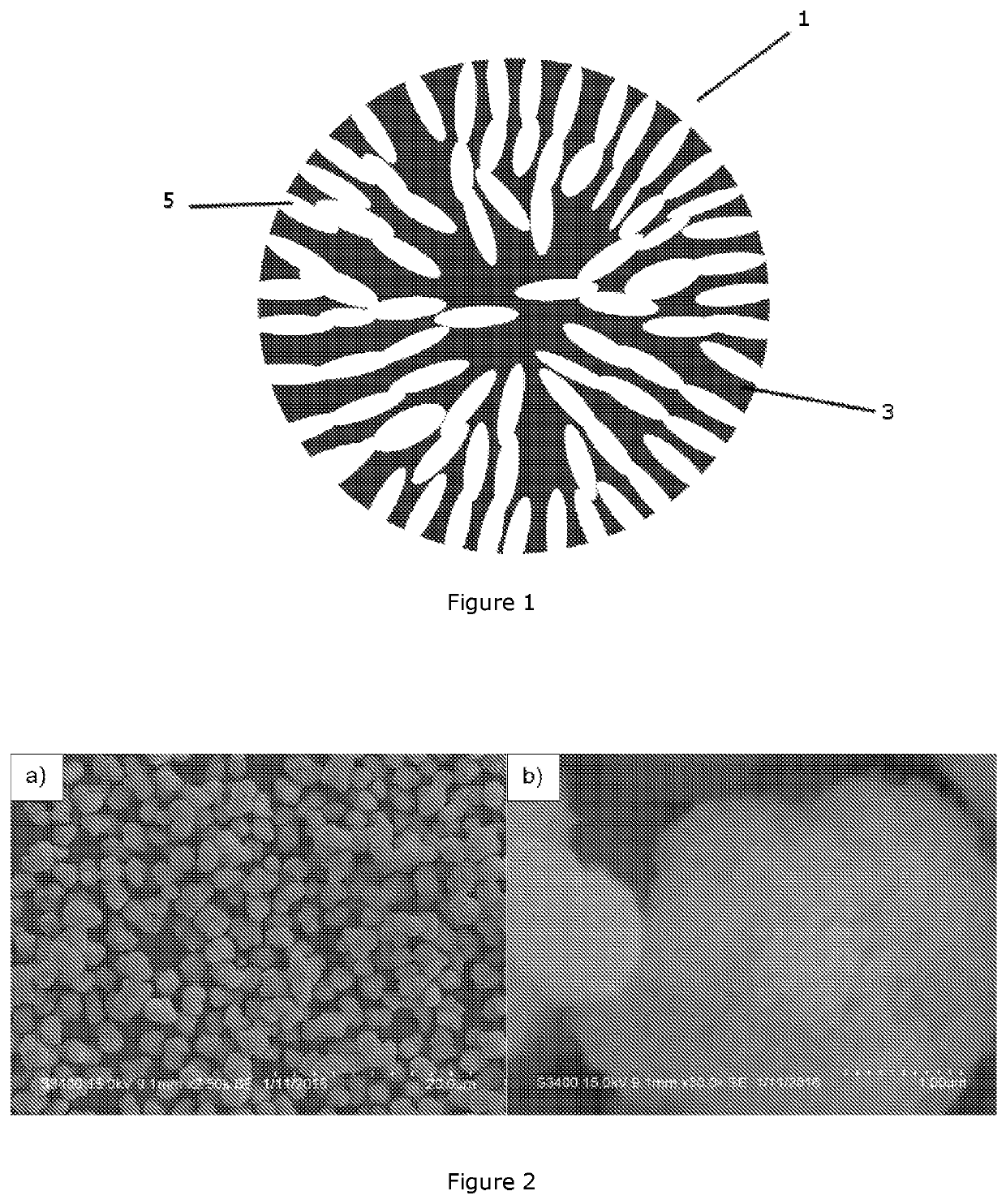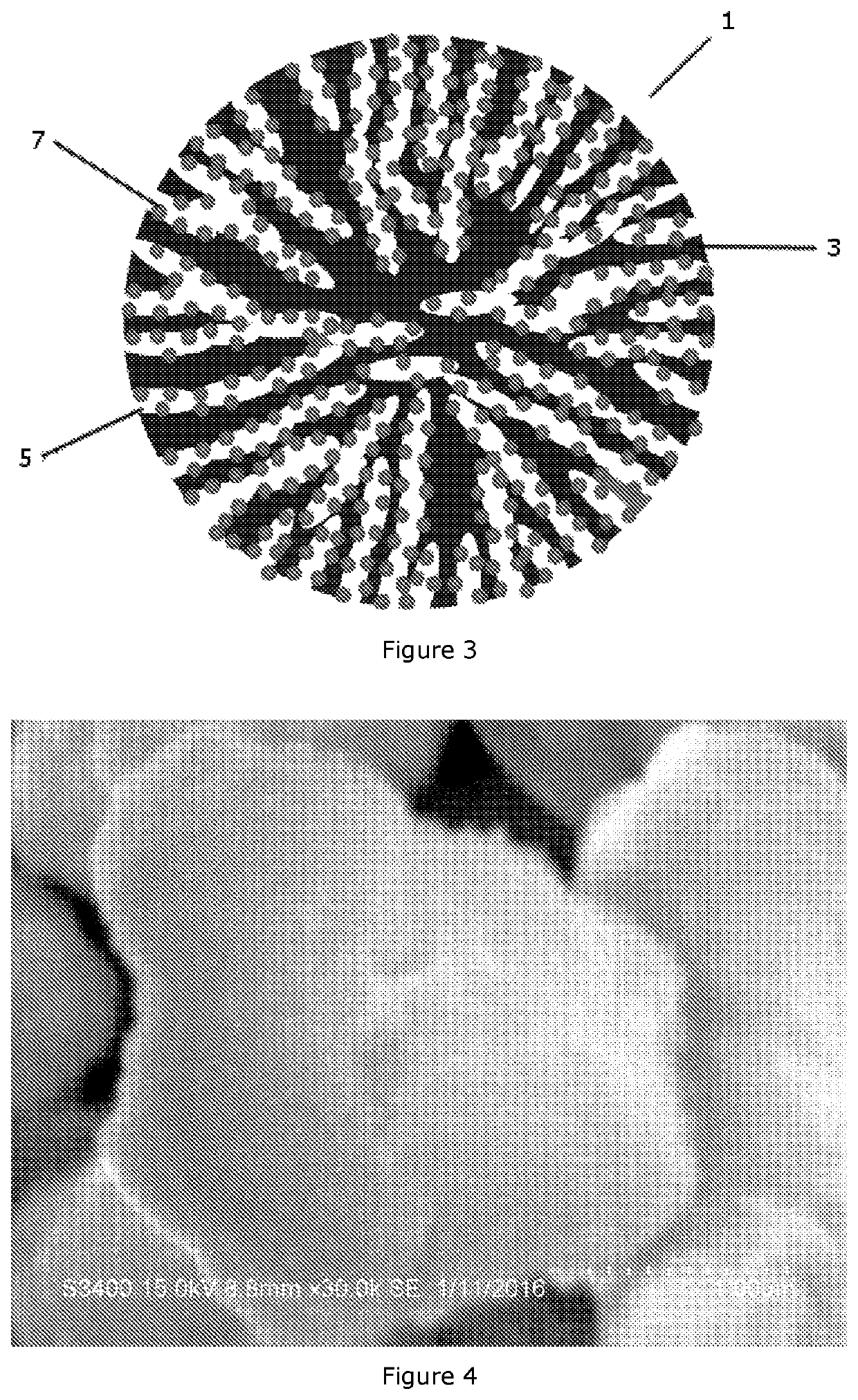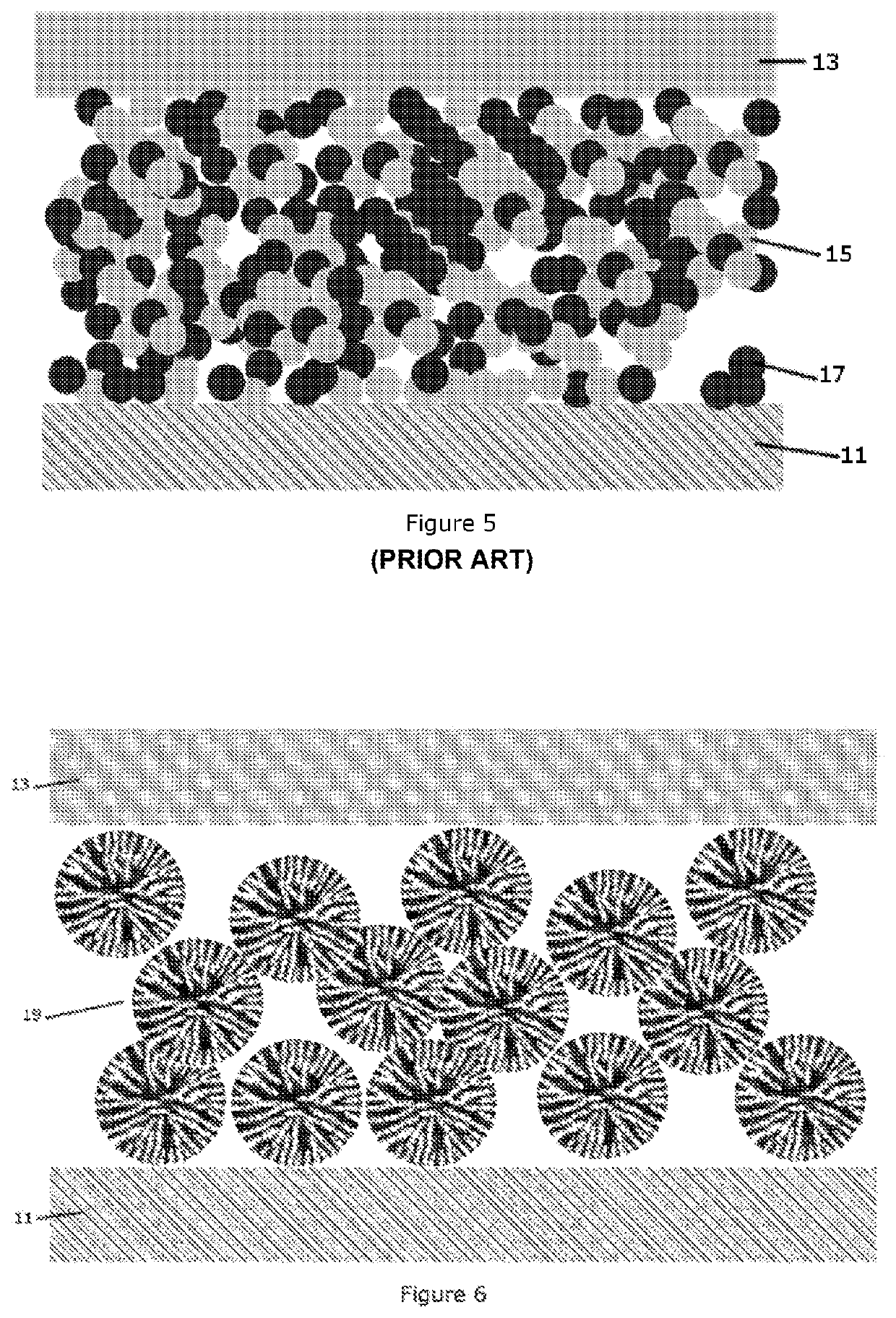Anode for a solid oxide fuel cell and composition and method for forming same
a fuel cell and solid oxide technology, applied in the direction of fuel cells, solid electrolyte fuel cells, cell components, etc., can solve the problems of difficult to introduce continuous and high porosity throughout the entire anode structure and impregnate catalytic materials into the porous matrix, and achieve the effect of preventing cracking, and reducing the number of anodes
- Summary
- Abstract
- Description
- Claims
- Application Information
AI Technical Summary
Benefits of technology
Problems solved by technology
Method used
Image
Examples
Embodiment Construction
[0071]The embodiments described herein use 20% praseodymia-doped ceria (PDC, Ce0.8Pr0.2O1.9) supplied commercially by Solvay and which is typically used as a support for water gas shift catalysts in the automotive industry to reduce NOx emissions. PDC is obtained in the form of porous, approximately spherical particles of approximately 3 μm diameter, and they have a very high internal surface area of 150-200 m2g−1; the spherical particles being made up of agglomerates of nanometre-scale crystallites. A schematic representation of the spherical porous PDC particle 1 is shown in FIG. 1 comprising a particle body 3 and a plurality of pores 5.
[0072]The PDC particles are impregnated with a suitable metallic catalyst in order to line the pores of the PDC particles with active metal. In all embodiments described here the active metal catalyst is nickel or an alloy thereof. Nickel is known to be catalytically active for the dissociation of molecular hydrogen (which is an important step in t...
PUM
| Property | Measurement | Unit |
|---|---|---|
| pore sizes | aaaaa | aaaaa |
| pore sizes | aaaaa | aaaaa |
| pore sizes | aaaaa | aaaaa |
Abstract
Description
Claims
Application Information
 Login to View More
Login to View More - R&D
- Intellectual Property
- Life Sciences
- Materials
- Tech Scout
- Unparalleled Data Quality
- Higher Quality Content
- 60% Fewer Hallucinations
Browse by: Latest US Patents, China's latest patents, Technical Efficacy Thesaurus, Application Domain, Technology Topic, Popular Technical Reports.
© 2025 PatSnap. All rights reserved.Legal|Privacy policy|Modern Slavery Act Transparency Statement|Sitemap|About US| Contact US: help@patsnap.com



